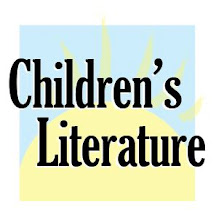His approach to teaching creative writing is a little different. In that short thirty minute period he chooses to focus on teaching how to pitch an idea for a novel.
Just like pitches for movies, David shows students how to write a log-line. Understanding how a novel works is a big concept to teach in a short period of time, but teaching what elements make-up a story is a much needed foundation for future writers. So he teaches about story versus the sequence of events and the difference between conflict and a complication.
I had the pleasure of hearing David deliver a talk to a room full of English teachers and other interested attendees at last fall's ALAN Workshop. David, the past-president of the Assembly on Literature for Adolescents, has served on the organization's board of directors for approximately ten years. In addition to sharing his strategy and tips on teaching writing to students with the group he also presented the template he gives to students to use as the skeleton of their novel.
This template is the spine of the novel--it covers the over arching actions and is composed of six parts. First, the given situation. Followed with an action by hero; then a complication occurs. Despite this complication the hero goes on to another action. However, the antagonist tries to thwart the hero with his/her own action before the hero's plan succeeds. David emphasized that pitches and templates require more than a cool premise or character. Teaching students about tension is key.
After writing short stories for magazines such as The Crescent Review and Writer's Forum, David's debut novel, Soul Enchilada, was published by HarperCollins in 2009. It was featured on several Best Book lists such as those from Bank Street College of Education, Kirkus, and YALSA; and was included in New York Public Library's Stuff for the Teen Age list.
His newest novel, Black Hole Sun, also from HarperCollins, was published in August 2010. Durango, a sixteen-year-old living on Mars, is leader of a crew of mercenaries who have been hired to protect miners from a cannibalistic group pursuing the mining treasure. Action packed and witty it has received starred reviews from School Library Journal and Booklist, who said "readers will have a hard time turning the pages fast enough as the body count rises to the climactic, satisfying ending, which will leave new fans hopeful for more adventures." Luckily, it's sequel, Invisible Sun, will be out in early 2012.
David is very active on social media and his website. To watch book trailers, read his blog, follow him on twitter, and much more visit: http://davidmacinnisgill.com/
Black Hole Sun
David Macinnis Gill
Movie-ready doesn't even begin to describe this lightning-paced action novel about a group of teen mercenaries out to make a living on a hardscrabble Mars and, if it's financially rewarding, save a few lives along the way. To be fair, only a few members of the ragtag group are in it solely for the cash, while the others are following a complex moral code of a samurai-esque group called the Regulators. Either way, none of them is quite prepared for the horror of the flesh-eating Draeu and their even more powerful, used-to-be human leader. Mars is tough living at best, and a group of miners, long weary of handing over their children on demand to the Draeu, decide to take a stand. Durango, the book's protagonist, takes the job to help them, and gathers as many allies as he can, though his word as an outcast Regulator means little. He has Mimi, his dead leader who is implanted in his head (and who offers both sardonic advice and technologically advanced assistance), and fiercely loyal Vienne, who will always help him, but everyone else in the group is dubious at best. The good guys are muddy and just trying to survive; the bad guys are creepy in all the right ways and just trying to survive as well. The elegantly, intricately described exotic setting is unremittingly bleak, and it serves almost as a character in itself, sometimes subtly sucking away ambition and other times bashing characters over the head with yet another Mars-related nightmare. Action, adventure, sci-fi, and horror buffs will all find this an almost perfect mix of all of the genres, and the addition of a soupçon of romance and hints of painful family drama results in a book that's got appeal to just about any potential speculative-fiction fan Review Code: R -- Recommended. (c) Copyright 2006, The Board of Trustees of the University of Illinois. 2010, Greenwillow, 340p., $16.99 and E-book ed. $12.99. Grades 9-12. Reviewer: April Spisak (The Bulletin of the Center for Children's Books, October 2010 (Vol. 64, No. 2)).ISBN: 9780061673047
ISBN: 9780061673054
Contributor: Emily Griffin





No comments:
Post a Comment